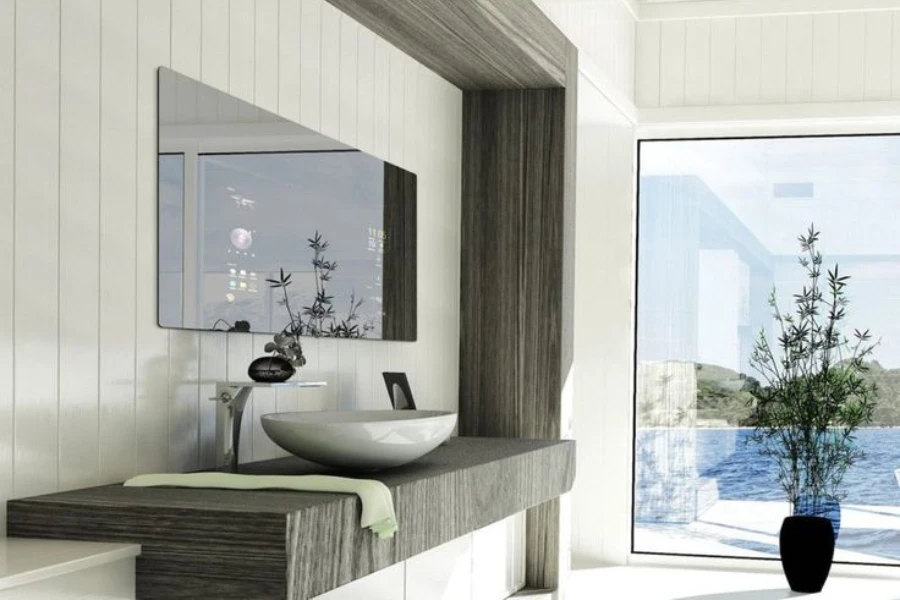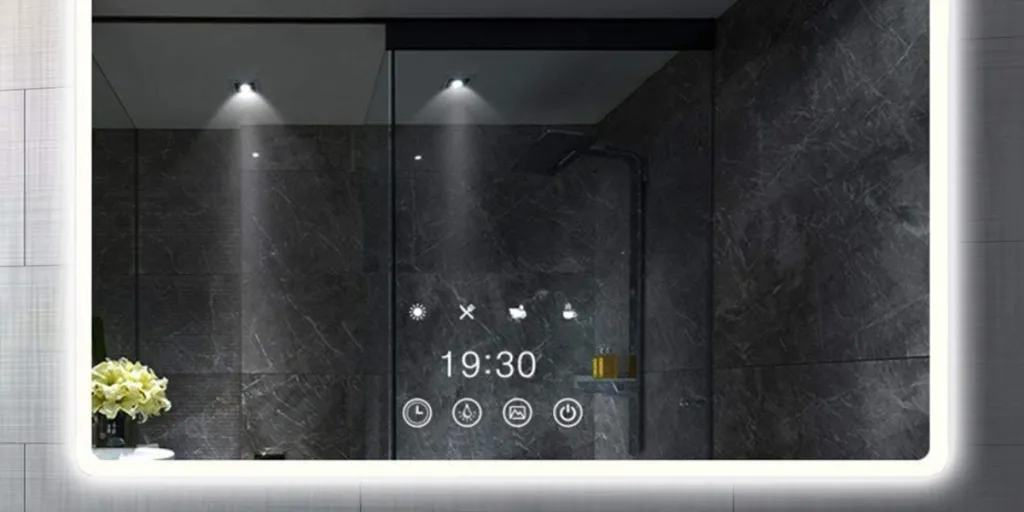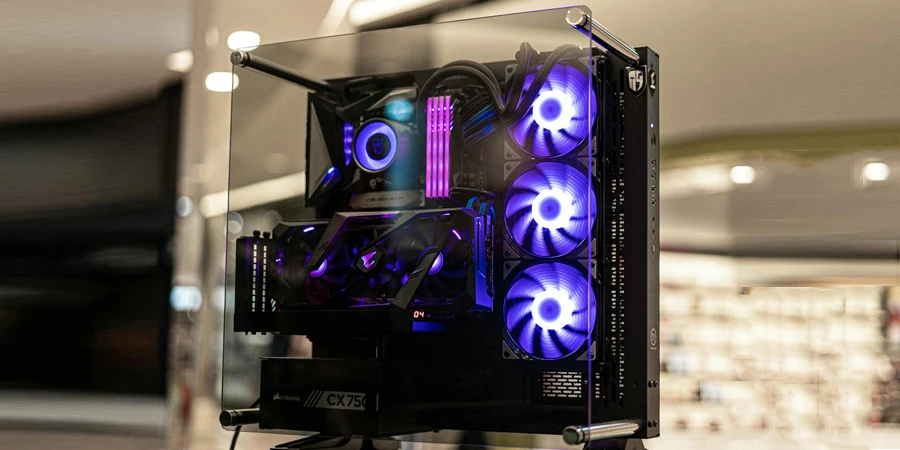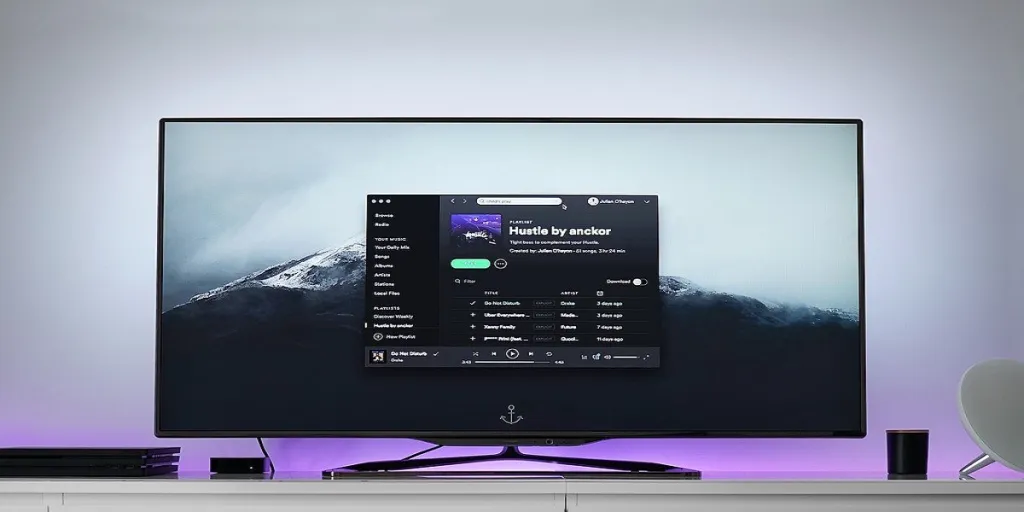Updated technologies are making their way into every industry, allowing common household items, like mirrors, to receive a significant overhaul. With this in mind, smart mirrors have made their debut, and many consumers can’t seem to get enough of them.
As the world keeps shifting toward home automation, smart mirrors are one of the many products that fit this trend. Keep reading to learn more about what smart mirrors are, and discover four tips to help retailers invest in the best options on the market for 2024.
Table of Contents
Smart mirrors: a new trend?
The magic behind smart mirrors
Smart mirror market outlook
4 tips to help retailers invest in smart mirrors
Final words
Smart mirrors: a new trend?
Smart and traditional mirrors do the same thing: provide reflections for consumers to prepare for their day. However, smart mirrors take things further by coming packed with various eye-popping features.
Smart mirrors feature built-in LED lights, allowing consumers to customize them for the right mood or adjust the warmth for the perfect lighting. But that’s not all that’s making these bad boys one of the best smart products for 2024.
Here’s some history: the first smart mirror iterations only offered Bluetooth connectivity, so consumers could connect and play their favorite tracks through their speakers. But more recent variants have evolved to include AI assistants (like Alexa), allowing users to control their mirrors hands-free.

Also, smart mirrors can display important information, like the time and weather, news, social media updates, calendar reminders, and personalized information. Consumers can also interact with them through touchscreen or voice control.
Even better, some smart mirrors come packed with augmented reality (AR) integration. With this feature, consumers can try on different makeup styles/shades virtually before applying them physically, gain access to interactive fitness guides, and enjoy personalized styling suggestions.
The best part is smart mirrors have been on a growth streak in 2023—with some impressive stats from Google Ads to prove it. These devices ended August 2023 with 49500 but soon grew to 74000 inquiries by October. Impressively, November 2023 saw an amazing 50% increase, reaching 110000 searches—and so it looks like there’s no stopping smart mirrors from dominating smart homes.
The magic behind smart mirrors
Smart mirrors may feel like something straight out of a sci-fi movie, but the magic behind them is quite easy to explain. These innovative devices integrate cutting-edge tech into traditional mirrors to create devices that can do incredible things.
Of course, how each smart mirror works depends on how the technology manufacturers approach them. But with that in mind, they generally use hardware and software combos to create the magic consumers see today.
Here are some components that make smart mirrors tick:
- Display: Smart mirrors use OLED or LCD high-resolution displays, which manufacturers mount behind the mirror surface. This high-res display shows various digital information, graphics, and interactive elements that make the mirror “smart.”
- Computer (processing unit): Smart mirrors need specific software, and the processing unit is the component responsible for running it. Typically embedded within the device’s frame, the processing unit controls everything from the functions to the data displayed.
- Sensors: Manufacturers include various sensors, like motion, touch, and camera. These integrated sensors allow smart mirrors to capture information about the user’s presence, gestures, or interactions.
- Connectivity: Smart mirrors come equipped with Wi-Fi or Bluetooth connectivity to grant users access to the internet or allow them to link with other smart devices.
- Software: Usually, smart mirrors use existing software like MAC, Android, or Linux. However, some variants go with custom software to provide a different experience.
Smart mirror market outlook
Although smart mirrors are a fairly recent innovation, their statistics pack a punch, proving they are one of the fastest-growing markets in the industry. According to experts, the smart mirror market achieved a US$ 2.7 billion total revenue in 2022. However, experts forecast it to reach US$ 5.9 billion by 2027 at an impressive 16.8% compound annual growth rate (CAGR).
You may be wondering why this trend is bursting with potential? Simple! The market drivers include the rising demand for smart homes, growing adoption in the automotive retail industry, and increasing consumer interest in the smart mirror’s innovative features.
In addition, Europe, closely followed by North America, has the highest potential to lead the smart mirror market due to the increasing adoption in various industries.
4 tips to help retailers invest in smart mirrors
Determine why target consumers want smart mirrors
The first thing to consider is why consumers want smart mirrors—as this determines the type they’ll purchase. Some people may want smart mirrors for their aesthetic appeal, while others are more attracted to their advanced technological capabilities.
If target consumers fall into the former, businesses must consider purchasing smart mirrors with customizable frames and minimalist designs. But if they fall into the latter, retailers should focus on variants offering various integrations and applications so they can fit naturally into a smart home setup.
And what about consumers who want both aesthetic appeal and functionality? That’s easy—many smart mirrors look amazing and pack all the features to keep consumers amazed and satisfied. Consider stocking up on these to cater to such buyers.
Choose the right mirror size
Size is another critical aspect that determines if consumers will buy what businesses are offering. Think of it this way: no one would buy a full-length countertop model if they don’t have the space for it.
Consumers often shop for smart mirrors with a specific size in mind. So, retailers can provide various size options or cater to a particular size niche. The goal is to offer the best mirror size that will fit comfortably without obstructing anything.
But there’s more. Retailers must also consider the digital display size within the mirror. Larger displays attract users looking for a more comprehensive view, while smaller ones will suffice for those needing quick access to essential updates.
Note: smart mirror sizes range from small countertop models to full-length wall-mountable variants.
Prioritize the smart mirror’s display quality
After settling on the perfect size to stock up on, the next thing to worry about is display quality. High-resolution displays are the go-to for clearer and more enjoyable user experiences, especially if consumers view images or watch videos on their smart mirrors.
So, retailers should prioritize smart mirrors with at least 1080p resolution. It’s the minimum requirement for a crisp and vibrant display. Also, don’t forget the smart mirror’s contrast and brightness settings, as they significantly affect the digital display’s visibility in various lighting conditions.
Ensure the mirror offers smart device and platform compatibility
What’s a smart mirror without any of the “smart” features? Sellers must ensure the smart mirrors they purchase have smart device and platform compatibility.
For instance, many smart mirrors can easily integrate with popular smart home platforms like Google Assistant, Amazon Alexa, and Apple Homekit. This integration allows users to control different aspects of their home through the smart mirror’s touchscreen interface or voice command feature.
Additionally, retailers must also look for smart mirrors that can connect to the user’s smartphone. Such models often come with apps so consumers can access quick settings or control what is displayed on the mirror.
Final words
Smart mirrors have taken how consumers interact with technology to a new level. They offer peak convenience as users gain access to relevant information while getting ready for the day or completing other tasks—and with minimal interactions.
Plus, they’re highly customizable and can provide entertainment in the usually quiet bathroom space. All these benefits push smart mirrors to the spotlight, where they’re attracting a great deal of attention.
And what better time for businesses to invest in this trend than now? Leverage the tips discussed in this article to stock up on the right smart mirrors for more sales in 2024.








